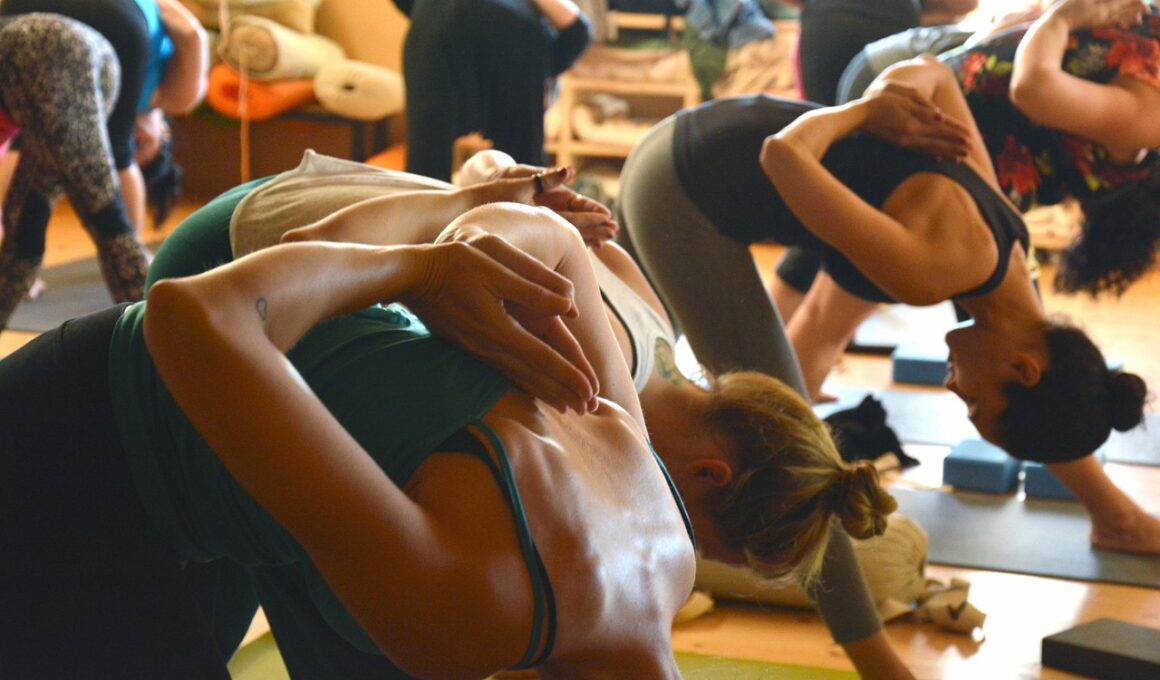Improve Flexibility with Resistance Bands Pilates
Resistance bands Pilates workouts offer an incredible benefit for flexibility and overall physical health. Specifically designed to enhance your movement capabilities, these workouts combine the principles of traditional Pilates with the added resistance of bands. The result is a unique exercise routine that effectively targets your core muscles while providing a gentle stretch. One of the main advantages of using resistance bands in Pilates is that they allow for a customized level of resistance tailored to your strength and skill level. For beginners, bands can assist in maintaining proper form, while more advanced users can increase resistance to challenge themselves further. Additionally, resistance bands are lightweight and portable, making it easy to incorporate them into any living space. You can also easily coordinate individual exercises with strength and stretching movements. This versatility makes resistance band Pilates workouts accessible to a wider audience, breaking down barriers to entry for those looking to improve flexibility. By regularly engaging in band-enhanced Pilates routines, you will see improved muscle tone, better posture, and a remarkable increase in your flexibility and range of motion.
Incorporating resistance bands into your Pilates regimen opens up a variety of exercise options that enhance flexibility. These exercises allow practitioners to engage specific muscles while stretching areas that are typically tight. Techniques like using the bands to deepen your stretch or assist with challenging moves can lead to significant results. Here are a few exercises to consider: 1. Seated band stretches: Sit with your legs extended and wrap a band around your feet to assist deeper stretches. 2. Bridging with bands: Place bands around your thighs while performing bridges to engage your hip flexors and glutes effectively. 3. Side leg lifts: Using bands on your ankles can provide added resistance, targeting your hip abductor muscles for an effective outer thigh workout. It’s essential to focus on your breathing and alignment during these exercises to maximize the benefits. Moreover, you can easily modify the intensity by changing your grip or the length of the band. Ultimately, the combination of resistance and stretching will promote a balanced body and enhanced flexibility.
The Benefits of Resistance Bands for Flexibility
There are numerous physical advantages associated with resistance band workouts. Firstly, they help to improve flexibility by allowing a broader range of motion during stretches compared to bodyweight alone. By incorporating resistance bands into your workouts, you can penetrate deeper into stretches, facilitating muscle elongation effectively. Secondly, bands provide a constant pull, which engages stabilizing muscles throughout the movement. This engagement not only increases the effectiveness of the stretch but also reduces the risk of injury. Additionally, it aids in muscle recovery and promotes joint stability. Furthermore, resistance bands are incredibly versatile and suitable for various fitness levels, making them an excellent choice for both beginners and advanced practitioners. Due to their configuration, bands allow for a smooth, controlled movement that promotes effective engagement of the muscles without overwhelming tension. Lastly, they are an excellent tool for cross-training in various sports, further improving athletic performance and flexibility. By incorporating resistance bands Pilates workouts into your routine, you will experience enhanced physical performance, allowing you to engage in other sports more effectively.
Setting up your resistance bands for Pilates workouts is a straightforward process but requires attention to detail for optimal results. First, ensure that the bands you select are appropriate for your skill level, looking for the right resistance that can challenge you without causing strain. Next, secure the bands to suitable anchor points. You can use door anchors or tie the bands around sturdy furniture, ensuring stability during exercises. It’s also crucial to set up a comfortable and spacious workout area to move freely. As you become more comfortable with the bands, you will find ways to integrate them into different Pilates movements seamlessly. This gradual approach helps build your confidence and enables you to realize the full potential of resistance band workouts. Start with simpler movements before advancing to more complex exercises to ensure proper form and prevent injury. Don’t forget about warming up before starting your session; including some basic stretches will prepare your muscles and joints, setting the stage for a more effective workout. Consistency is vital, so commit to regular practice to see significant improvements.
Recommended Resistance Band Exercises for Flexibility
In order to benefit fully from resistance bands in your Pilates workouts, consider the following exercises. 1. *Standing leg stretch*: Attach bands to your foot and hold the opposite end, leaning forward to deepen the stretch. This will efficiently target your hamstrings and lower back. 2. *Twists with bands*: Stand with your feet hip-width apart and secure the band behind you. Twist your torso to engage your core while stretching your shoulders and back. 3. *Shoulder opener*: Loop a band around your hands, raising your arms overhead while pulling the band apart; this will open up your chest and enhance shoulder flexibility. 4. *Extended side bend*: With the band secured beside you, reach over your head and lean into the side, creating a stretch along your obliques. Incorporating these exercises consistently into your routine helps improve overall flexibility and body awareness. It’s rewarding to witness your gradual progress, as the combination of targeted stretches with resistance bands enhances your Pilates experience, ultimately leading to a more flexible body.
Maintaining progress in resistance bands Pilates workouts requires more than just performing the exercises; consistency and mindful practice are crucial to enhancing flexibility. Setting a schedule of at least three sessions per week can lead to noticeable results over time. Additionally, incorporating rest days between workouts is essential for muscle recovery and healing. To sustain motivation, vary your routines by introducing new exercises or altering the resistance level. This will keep your muscles challenged and engaged, promoting growth and flexibility concurrently. Tracking your progress is also beneficial; keeping a log allows you to set realistic goals to aim for. Consider taking photographs or measurements to visually demonstrate the benefits of the workouts over time. Along with physical flexibility, monitor any changes in your posture and general wellbeing. Staying attuned to your body helps identify areas for improvement, ensuring you can focus on specific stretches and exercises. As you progress, celebrate achievements, no matter how small; these milestones foster motivation and contribute to a more enjoyable experience. Ultimately, persistence and dedication will significantly improve your flexibility and overall fitness levels.
Conclusion: Embrace Resistance Bands Pilates
To sum up, incorporating resistance bands into your Pilates workouts can significantly enhance flexibility and muscle tone. This unique combination of resistance and core strengthening helps to develop a balanced, sculpted physique. Begin with basic exercises to build confidence before gradually incorporating more challenging movements that leverage bands to deepen stretches and enhance engagement. The versatility and accessibility of resistance bands make them a perfect addition to any fitness routine, allowing you to exercise at home or while traveling. Throughout your journey, remember to listen to your body and prioritize proper form for long-term success. Regular practice, combined with patience and dedication, will not only lead to improved flexibility but also promote overall health and functional strength. Whether you are new to Pilates or an experienced practitioner, resistance bands provide an exciting way to elevate your workouts. As you embark on this fitness journey, embrace the challenge and set personal goals to drive motivation. By remaining consistent and committed, you will uncover the transformative effects of resistance bands Pilates and witness your body becoming more flexible and stronger.
In conclusion, the journey toward achieving greater flexibility using resistance bands in Pilates takes dedication and effort. Always practice mindfulness while exercising and maintain a focus on slow, controlled movements. This mindful practice not only improves effectiveness but also helps prevent injuries. Adapt your routine as needed, striving always for growth, and challenge your limits progressively. Discovering new ways to incorporate resistance bands will keep your sessions fresh and exciting while simultaneously targeting different muscle groups. Consider joining a local class or community to increase your connectivity with fellow Pilates enthusiasts and learn even more techniques to enhance flexibility. Online resources and video tutorials can also provide invaluable guidance, enabling you to observe proper form and effective modifications. The world of resistance bands Pilates is vast, presenting endless opportunities for improvement. Allow yourself to embrace the challenge, stay consistent, and cultivate a passion for movement and flexibility. Your dedication will not only yield remarkable physical results but also contribute to mental resilience and wellbeing. As you engage with resistance band Pilates workouts, remember, flexibility is not just a destination; it’s a continuous journey of self-discovery and growth.


